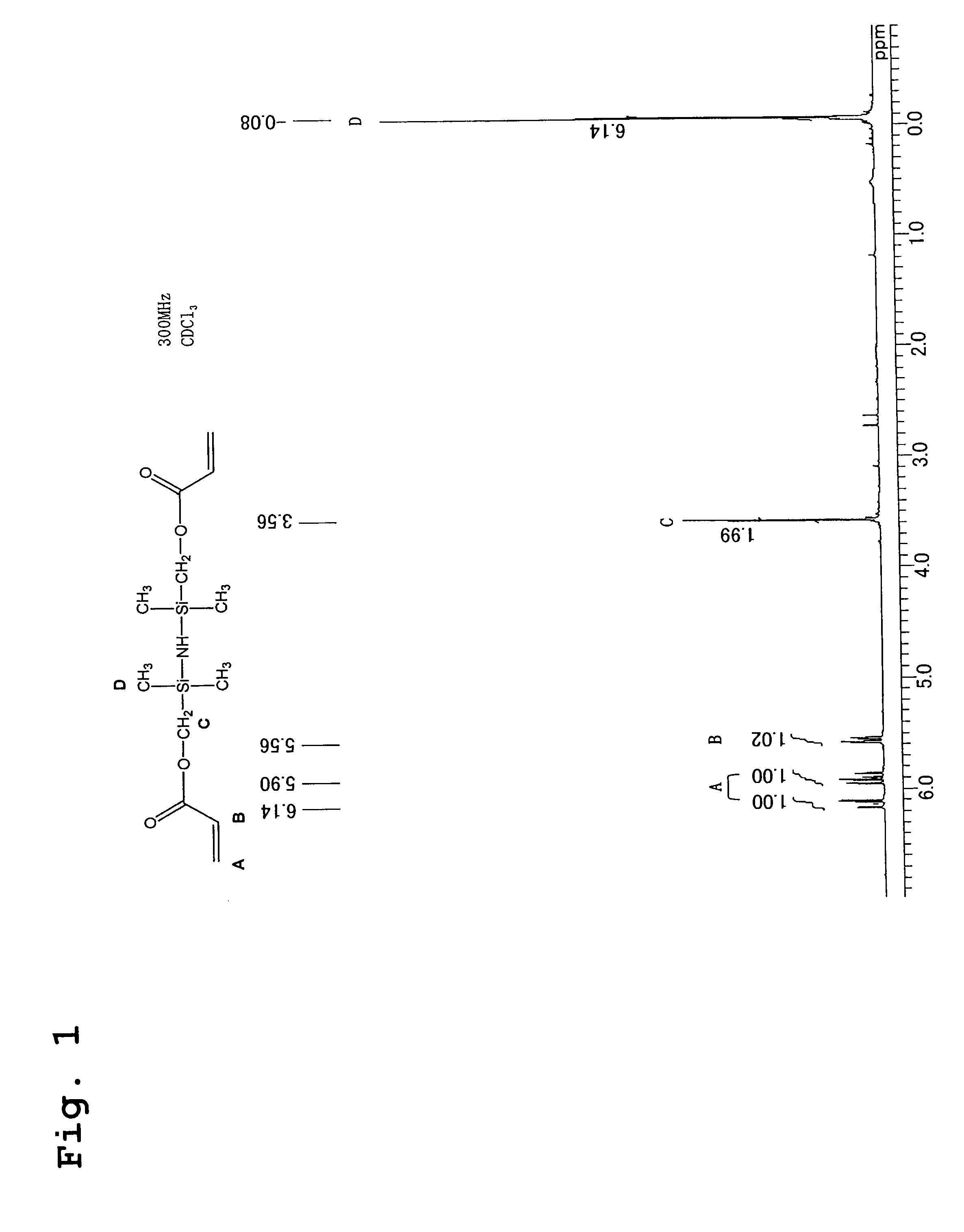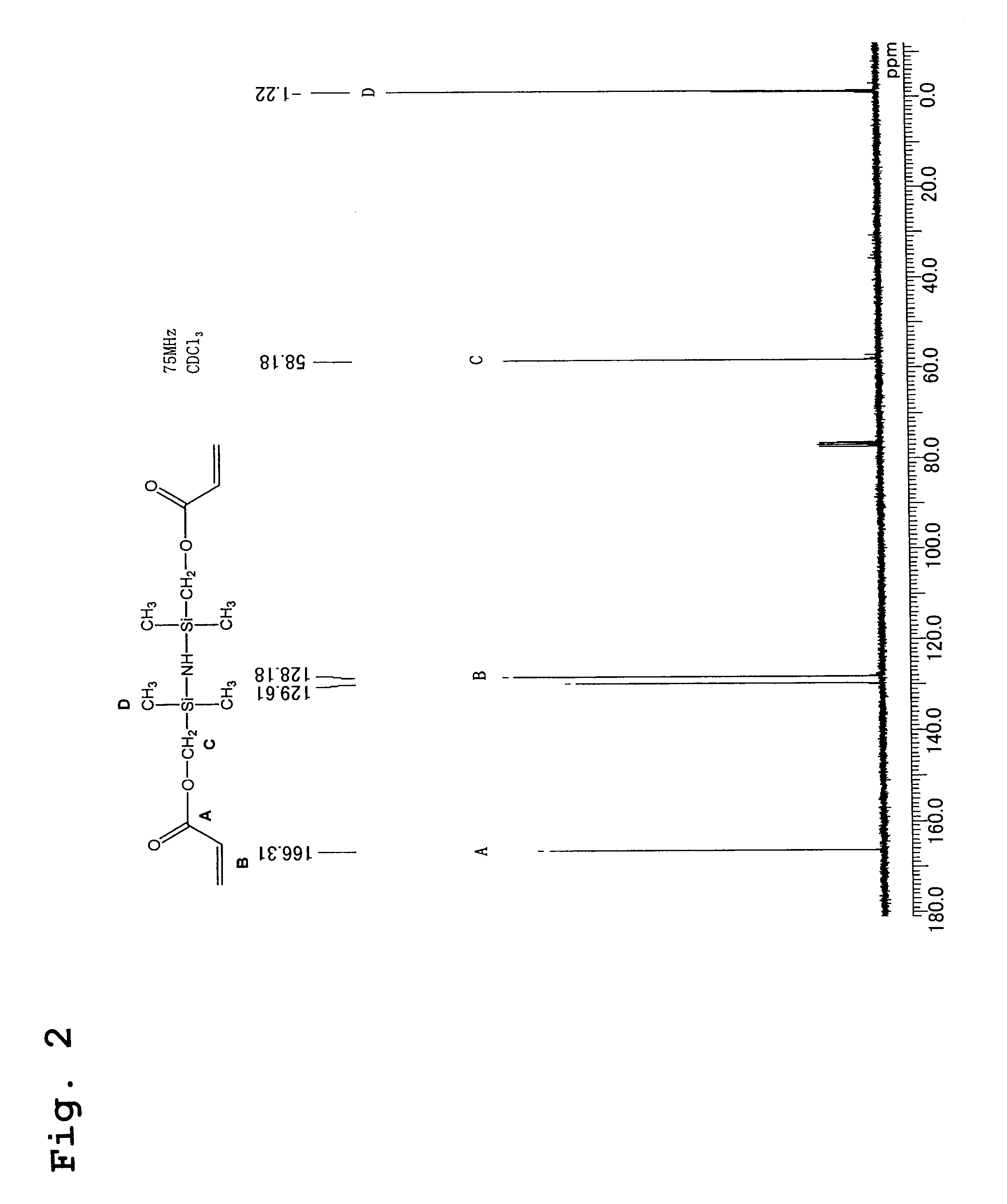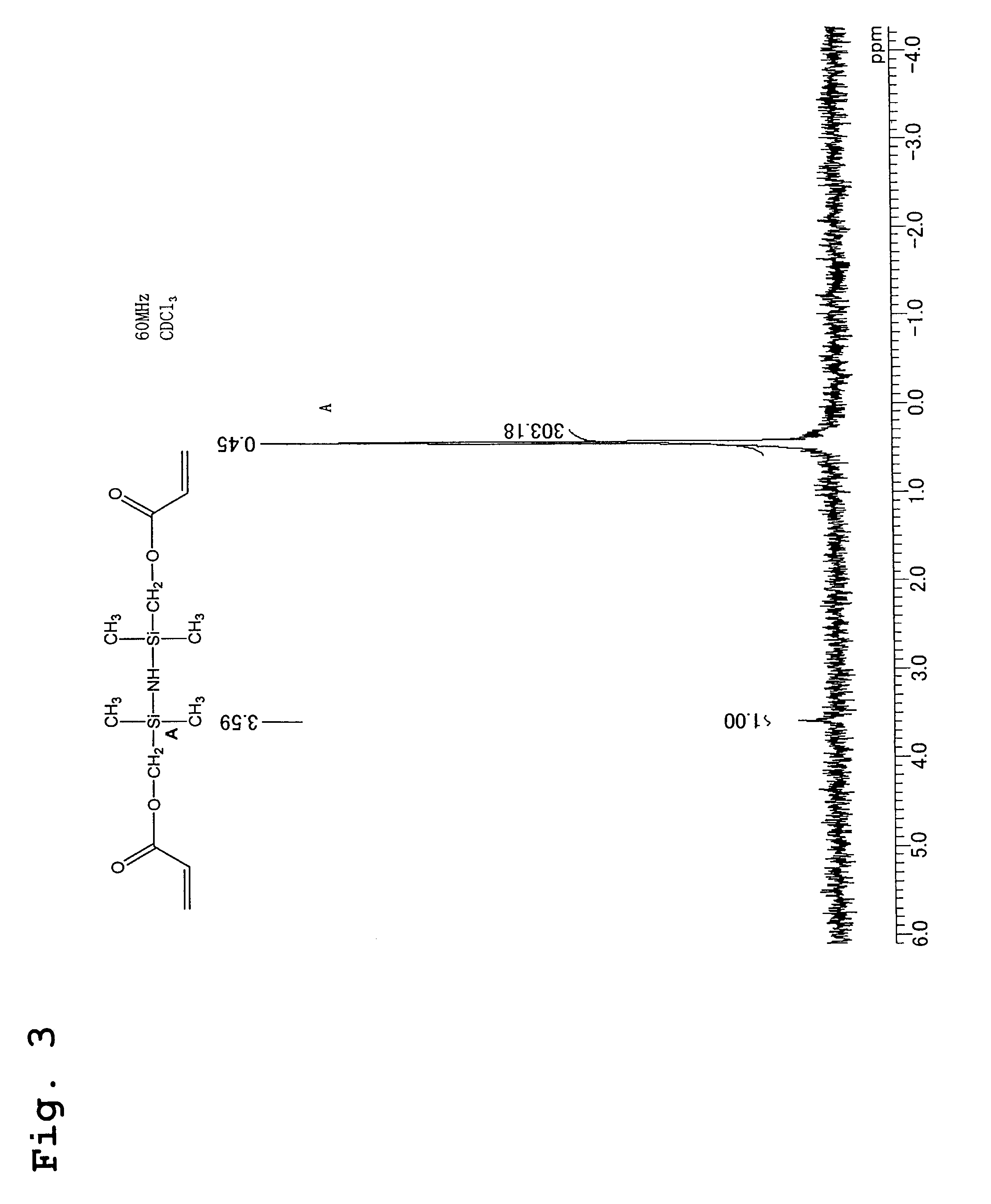Method of producing organosilylamine containing radiation-polymerizable functional group and organosilylamine containing radiation-polymerizable functional group
- Summary
- Abstract
- Description
- Claims
- Application Information
AI Technical Summary
Benefits of technology
Problems solved by technology
Method used
Image
Examples
example 1
[0056]220 g (2.0 mols) of potassium acrylate, 200 g of dimethylformamide, 200 g of toluene, and 2.7 g of bis-t-butylhydroxytoluene were placed in a 1 liter glass separable flask fitted with a thermometer, a water-cooled condenser and a dropping funnel, the mixture was heated to 140° C., and any moisture contained within the toluene and the potassium acrylate was distilled and removed from the reaction system. Subsequently, the temperature was lowered to 120° C., and 230 g (1 mol) of 1,3-bis(chloromethyl)-1,1,3,3-tetramethyldisilazane was added dropwise to the reaction system. The reaction mixture was then heated under reflux at 120° C., with constant stirring, while the progress of the reaction was tracked by GC. After 3 hours, the peak attributable to the raw material silazane had completely disappeared, and the appearance of a new peak attributable to the reaction product was confirmed by GC, indicating the end point of the reaction. Subsequently, the produced potassium chloride w...
example 2
[0057]With the exception of replacing the 220 g (2.0 mols) of potassium acrylate from Example 1 with 248 g (2.0 mols) of potassium methacrylate, a light yellow liquid was obtained in the same manner as Example 1. GC revealed that the purity of this reaction product was at least 97%. Furthermore, analysis using 1H NMR, 13C NMR, 29Si NMR and IR spectroscopy confirmed that the reaction product was the target compound, namely 1,3-bis(methacryloyloxymethyl)-1,1,3,3-tetramethyldisilazane.
[0058]1H NMR (300 MHz, CDCl3, δ): −0.08 ppm (s, 12H), 1.72 ppm (s, 6H), 3.57 ppm (s, 4H), 5.31 ppm (m, 2H), 5.86 ppm (m, 2H)
[0059]29Si NMR (60 MHz, CDCl3, δ): 0.5 ppm
example 3
[0060]With the exception of replacing the 230 g (1 mol) of 1,3-bis(chloromethyl)-1,1,3,3-tetramethyldisilazane from Example 1 with 286 g (1 mol) of 1,3-bis(γ-chloropropyl)-1,1,3,3-tetramethyldisilazane, a light yellow liquid was obtained in the same manner as Example 1. GC revealed that the purity of this reaction product was at least 97%. Furthermore, analysis using 1H NMR, 13C NMR, 29Si NMR and IR spectroscopy confirmed that the reaction product was the target compound, namely 1,3-bis(γ-acryloyloxypropyl)-1,1,3,3-tetramethyldisilazane.
[0061]1H NMR (300 MHz, CDCl3, δ): −0.08 ppm (s, 12H), 0.36 ppm (t, J=7 Hz, 4H), 1.46 ppm (quint, J=7 Hz, 4H), 3.81 ppm (t, J=7 Hz, 4H), 5.58 ppm (m, 2H), 5.92 ppm (m, 2H), 6.13 ppm (m, 2H)
[0062]29Si NMR (60 MHz, CDCl3, δ): 0.5 ppm
PUM
| Property | Measurement | Unit |
|---|---|---|
| Temperature | aaaaa | aaaaa |
Abstract
Description
Claims
Application Information
 Login to view more
Login to view more - R&D Engineer
- R&D Manager
- IP Professional
- Industry Leading Data Capabilities
- Powerful AI technology
- Patent DNA Extraction
Browse by: Latest US Patents, China's latest patents, Technical Efficacy Thesaurus, Application Domain, Technology Topic.
© 2024 PatSnap. All rights reserved.Legal|Privacy policy|Modern Slavery Act Transparency Statement|Sitemap



